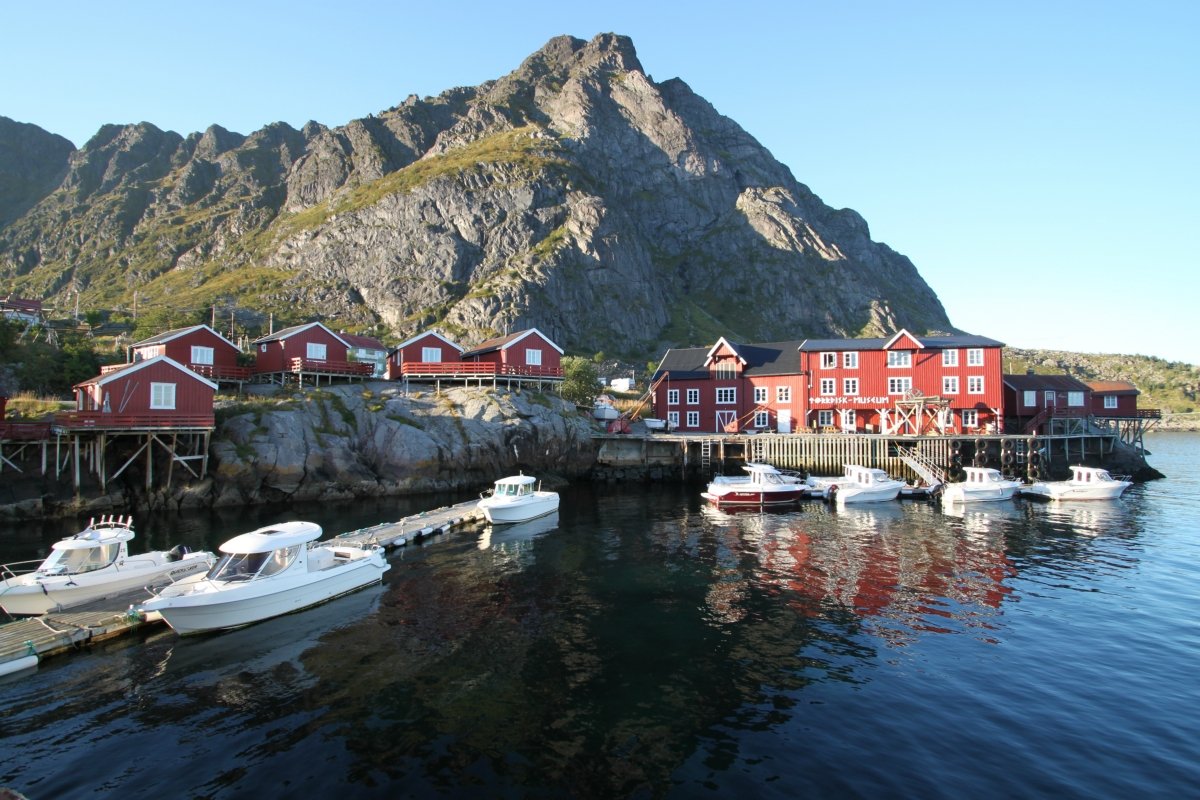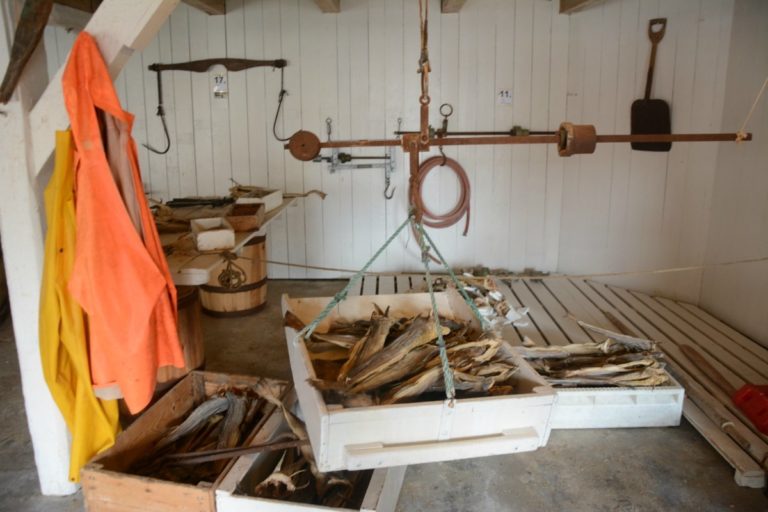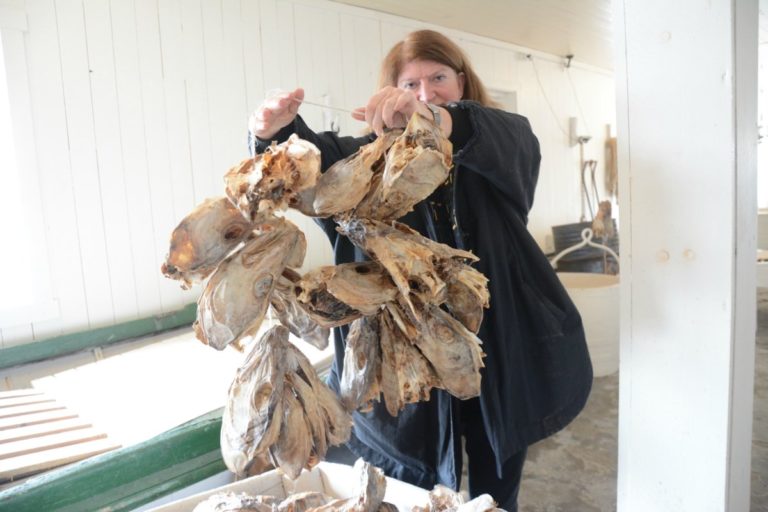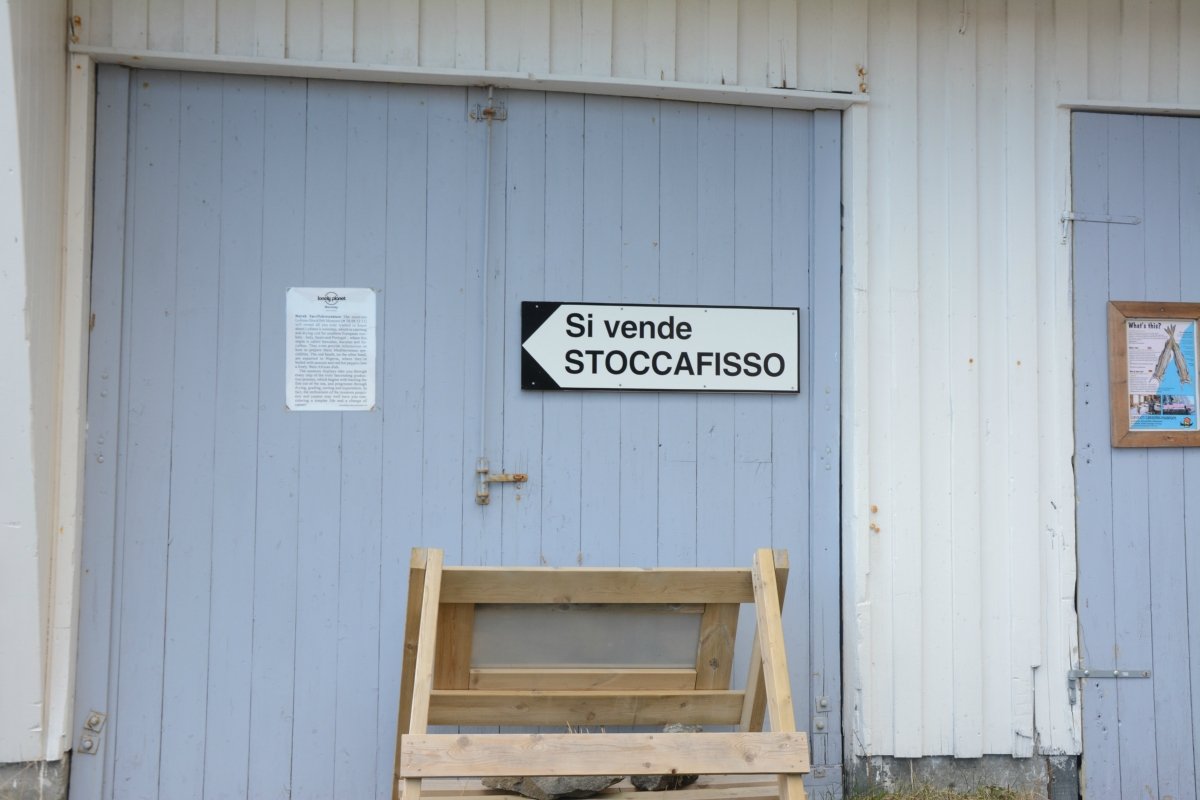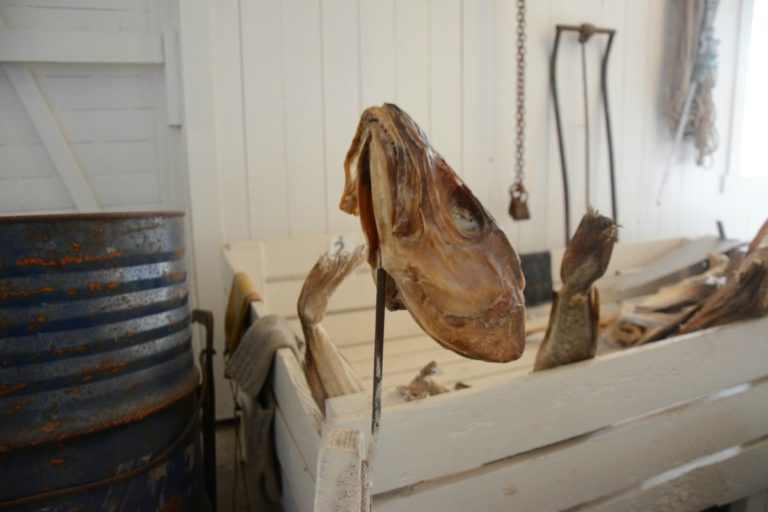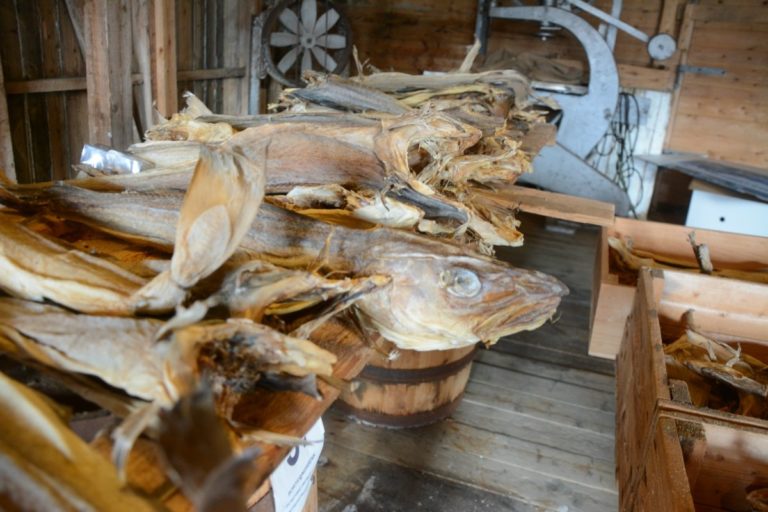We slammed on the brakes on the way into Å in Lofoten. Why? Because we saw si vende stoccafisso written on a sign on a garage door; it means ‘stockfish sold here’ in Italian. What was this? We had to go and see, and what we found was the Lofoten Stockfish Museum, which tells the story of how Lofoten Arctic Cod becomes dried stockfish, Norway’s oldest export product.
Stockfish is as protected as Champagne
Stockfish is Arctic cod that is caught during the Lofoten fishery. It is then hung on huge frames to dry. In Lofoten, the winter climate is absolutely perfect — not so cold that the fish freezes solid, and not so mild that it rots. Only here can you get such top quality. The stockfish is then exported to Italy. Now it has become a protected brand in the EU, similar to Roquefort and Chablis.
Practical information on the tørrfisk museum in Å
The museum is found around 30 seconds before you turn in to Å centre, down by the sea. Å is the outsermost fishing village that can be accessed on the main E10 route through Lofoten.
The museum is open all year round with longer opening hours during the summer months. There are regular tours, which we strongly recommend. Steinar has extensive experience from fierce negotiations with Italian fish buyers, so the knowledge of the field is great.
The process isn’t a simple one
The Lofoten Stockfish Museum is an old fish landing station that shows the entire process, from when the fish is brought ashore until it is finally packaged into 25 or 50 kilo (55 or 110 pound) bundles, ready for export. We see the lifting baskets with which the fish are hoisted up out of the boats and into the landing station, the weighing scales that can take up to 100 kilos (220 pounds) of fish, and the wheelbarrows that are used to transport the fish around the facility. The fish are tied together in pairs with little loops of twine, and we also see how the cod heads are threaded onto ropes for drying, and how the cod tongues are cut out by boys and girls as an extra source of income.
Sorting of the fish is meticulous
The dried fish loft is on the second floor. This is where the fish is stored in May and June, after it has fully dried out. Fish that have been damaged by frost or maggots, or fish that have gone sour are rejected. The sorters then spend the summer sorting every single dried fish according to its quality. There are (14) 16 different qualities on the Italian market. Buyers then come from Italy throughout the summer to purchase the fish, which involves some hard bargaining. Finally, the fish are packed into breathable jute sacks or 25 kilo cartons and shipped to Italy.
Northern Italy and southern Italy have different stockfish tastes
When the cod comes down to Lofoten in January, it is nice and plump after gorging on food. So cod that is caught in West Lofoten is round and fat. During the winter, the cod then swims further into the Lofoten area and many are caught in March in East Lofoten. However, the cod does not eat during the spawning season, which means that it becomes leaner, so the cod caught in the eastern area is a slimmer variety. In northern Italy, in places like Veneto and Liguria, they prefer the slim variety, while those in the south, in places like Campania, prefer the nice round quality.
Italy found stockfish by accident
Before the Reformation, stockfish from Lofoten was sold in the big cities in Northern Europe, and was popular during fasting periods. The Italians got a taste for stockfish purely by chance. In 1432, the Venetian sailor Pietro Querin, on his way to Bruges in Belgium, became stranded on Røst after his ship ran aground in a mighty storm. After a winter on Røst, he went back to Venice with the first stockfish.
Croatia and West Africa are steadily incresing their stockfish interest
The vast majority of the stockfish currently goes to Italy. Its gastronomic near-relation Croatia also buys stockfish. West Africa, particularly Nigeria, has been an important buyer at times, but then stockfish went from being a cheap food to a luxury, and it became too expensive for the less affluent Africans. For many years, only dried heads were sent to Africa, where they were ground up and used for chicken feed or soup stock. Now Africa has had a period of economic growth, and stockfish is being sold there again.
Klippfisk and salted fish brought us the dish bacalao
Klippfisk, or salt cod, is cod that has been salted before being laid out on cliffs to dry (although nowadays it is dried indoors in huge drying plants, in Ålesund). This product is best known from the northern part of Western Norway, but is also produced in Lofoten. Salted fish is cod to which large quantities of salt have been added, but which does not go through a drying process. Some klippfisk and salted fish are exported to Italy (baccalá), but much more goes to Portugal and Brazil (bacalhau) and to Spain, Mexico and the Dominican Republic (bacalao).
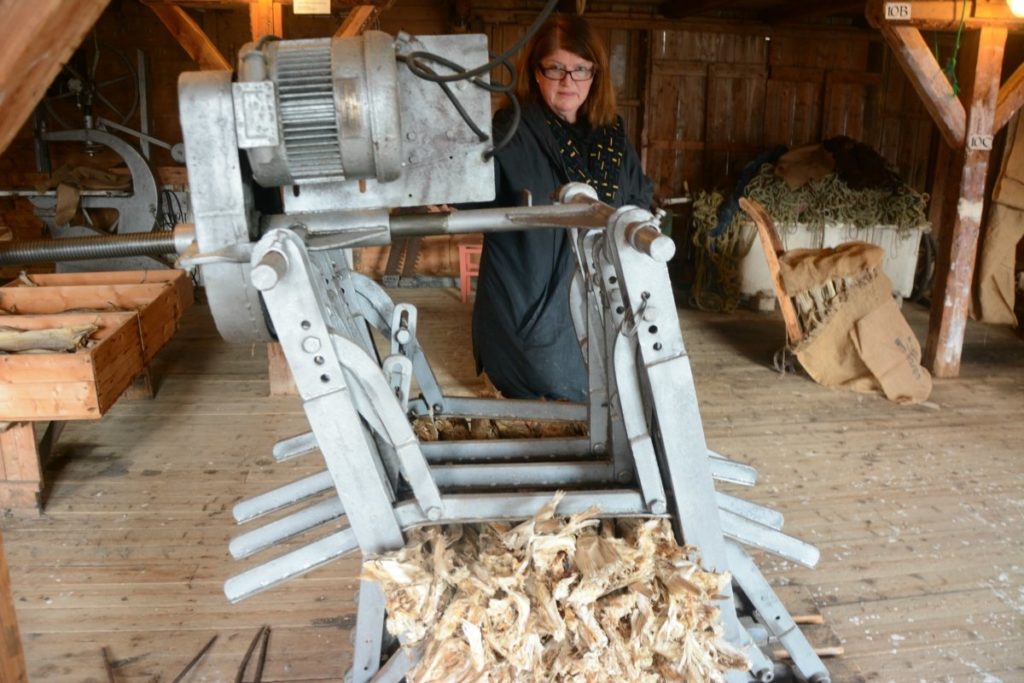
Visiting the Norwegian Stockfish Museum
The museum is open throughout the summer season. Its hosts are Steinar Larsen and Elin Graner. Steinar, who speaks fluent Italian, is an old hand at the tough bartering business, and they both know more or less everything there is to know about stockfish production. You won’t regret it if you make the effort to join one of the numerous guided tours that the museum puts on in the summer season. Å is at the end of the E10, near the western tip of Lofoten, and you can get there by bus from the airports at Leknes and Svolvær, as well as by ferry from Bodø to Moskenes. Have a look at theDestination Lofoten website for more information.
